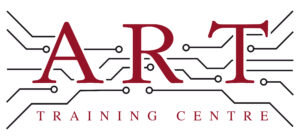Definition
Insulation Crimp is a process used in electronics manufacturing where a metal connector is securely attached to an insulated wire. This technique involves deforming the metal connector around the wire’s insulation and conductor, ensuring a strong electrical and mechanical bond. It is a vital component in creating reliable electrical connections in various devices, helping to prevent electrical shorts and ensuring efficient signal transmission.
How It’s Used in the Industry
In electronics assembly, Insulation Crimp is applied by first selecting the appropriate connector and wire gauge. The wire is stripped to expose the conductor, which is inserted into the connector. Using a crimping tool, the connector is compressed around the wire insulation and conductor, creating a secure joint. This method is commonly used in the assembly of printed circuit boards (PCBs) and wiring harnesses, ensuring reliable connections. For both technicians in training and experienced professionals, mastering insulation crimping is crucial for maintaining quality standards and preventing faults in electronic devices.
History & Origins
Insulation Crimp became common in electronics manufacturing during the mid-20th century, coinciding with advancements in wire and connector technologies. The development of standards, such as IPC (Institute for Printed Circuits), helped establish best practices for crimping techniques. As electronic devices became more complex, the need for reliable and efficient connections led to the widespread adoption of insulation crimping, which allowed for faster assembly and improved durability in electrical connections.
Variations
There are several variations of Insulation Crimp, including open-barrel and closed-barrel crimping techniques. Open-barrel crimping allows for more flexibility in wire sizes, while closed-barrel crimping provides a more secure connection. Additionally, insulation displacement connectors (IDCs) are a related method that does not require wire stripping. Understanding these variations helps technicians choose the right method for specific applications, ensuring optimal performance and reliability in electronic systems.
Modern Applications
Today, Insulation Crimp is widely used in electronics production, particularly in the assembly of surface mount and through-hole components. It is essential for creating reliable connections in devices ranging from consumer electronics to industrial equipment. Compliance with IPC standards ensures that crimped connections meet quality and reliability benchmarks, making this process critical for manufacturers aiming to produce durable and efficient electronic products.
Practical Tips & Training
When working with Insulation Crimp, it is important to use the correct tools, such as a quality crimping tool and wire strippers, to ensure precise connections. Inspect crimped joints visually and through pull tests to verify their integrity. Safety is paramount, so always work in a well-ventilated area and follow proper handling procedures. Structured training and certification in crimping techniques can greatly enhance a technician’s skills and understanding of quality standards in electronics.


